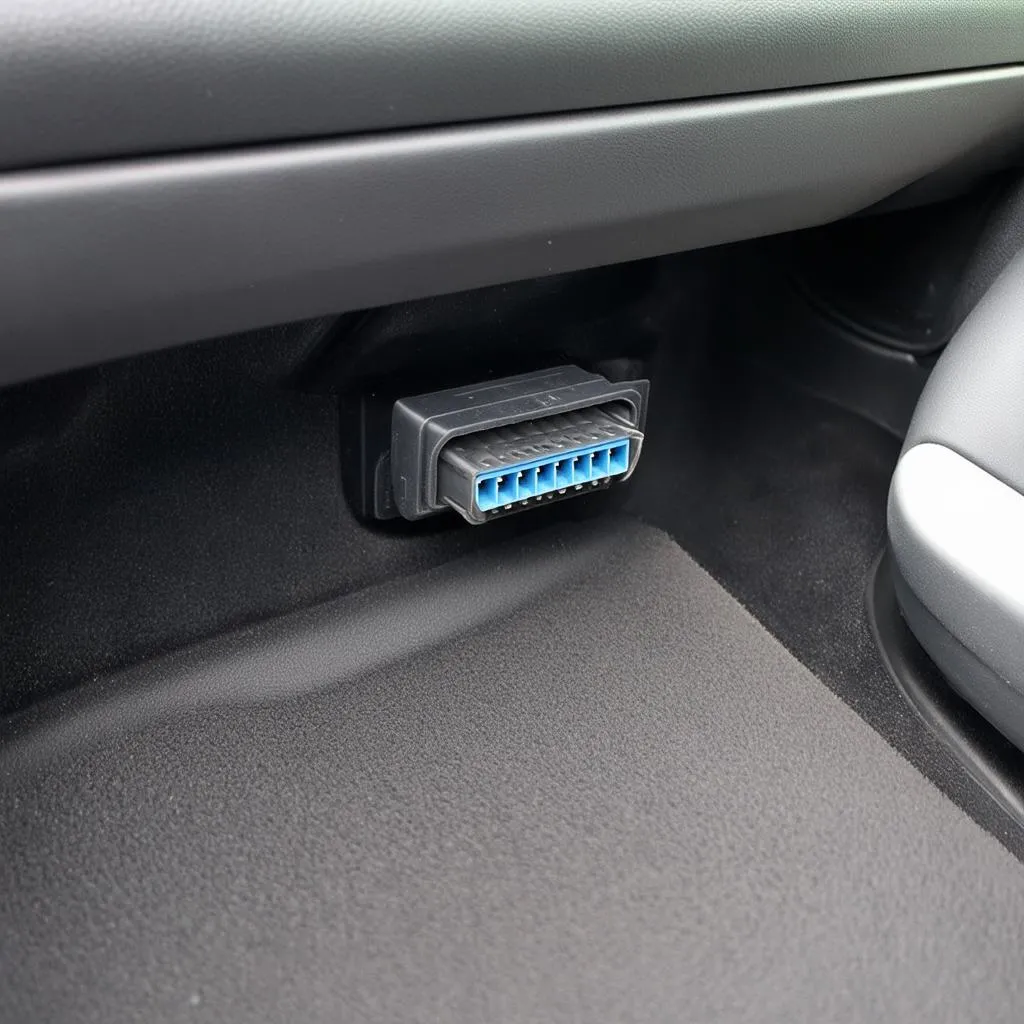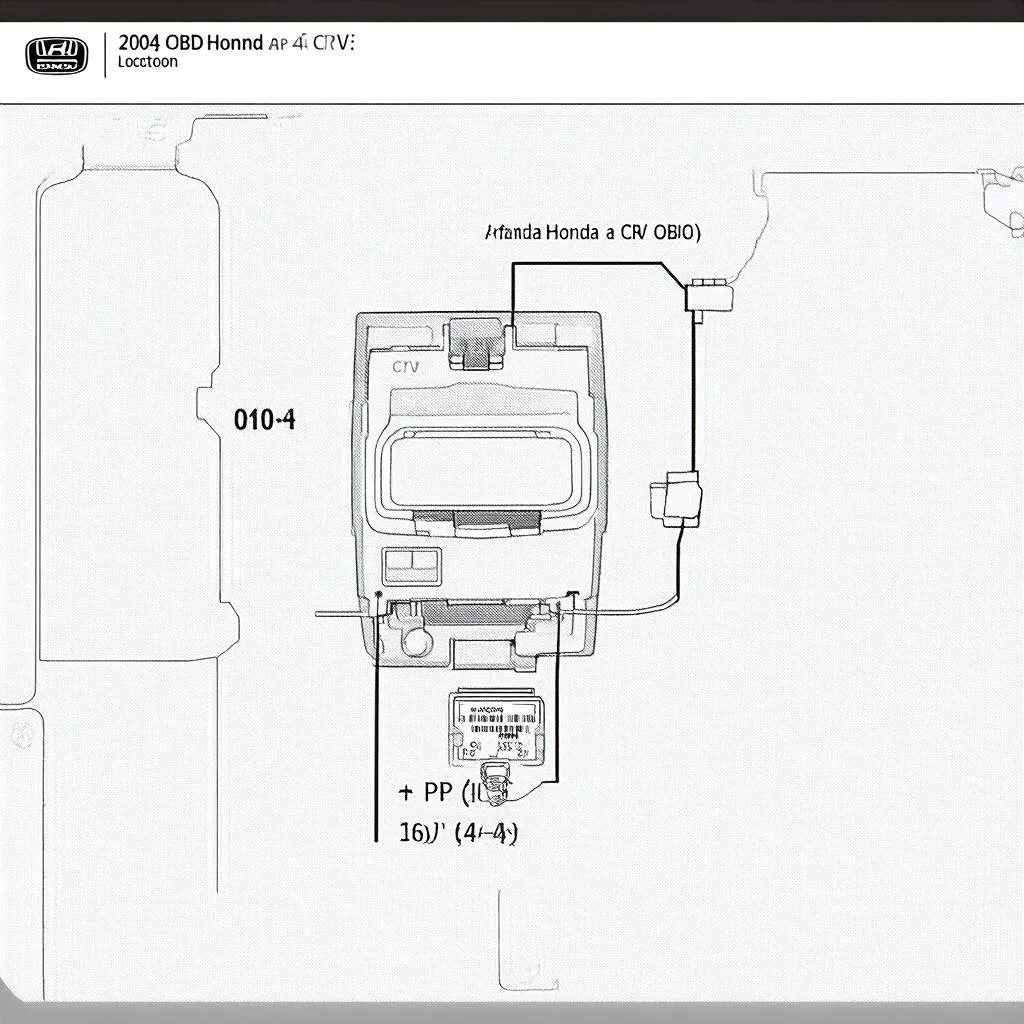Have you ever had that sinking feeling when your car’s check engine light flickers on? It’s like a silent scream, “Something’s wrong, and I need your help!” But don’t worry, you’re not alone. It’s a common experience for Honda CR-V owners, and one of the first steps to diagnose the issue is to connect a diagnostic scanner to the OBD port. But where is it?
What is the OBD Port?
The OBD port, which stands for On-Board Diagnostics, is a standardized connector located in your vehicle’s cabin. It’s the gateway to your car’s computer system, allowing you to read diagnostic codes and troubleshoot problems. Think of it as your car’s secret language translator, revealing its hidden messages about its health.
Finding the OBD Port on a 2004 Honda CR-V
On the 2004 Honda CR-V, the OBD port is conveniently located underneath the dashboard, on the driver’s side, near the steering column. It’s a 16-pin rectangular connector, typically blue or gray, with a label indicating “OBDII” or “DLC.” You’ll often find it tucked away, but it’s not hard to spot once you know where to look.
 2004 honda crv obd port location
2004 honda crv obd port location
Why is the OBD Port Important?
Imagine your car as a complex machine with countless parts working in harmony. When something goes wrong, it’s like a symphony with a missing instrument. The OBD port helps you pinpoint the source of the problem, so you can bring it back into tune.
- Diagnose engine problems: The OBD port allows you to read diagnostic trouble codes (DTCs) that are stored in your car’s computer. These codes provide valuable information about potential engine issues, ranging from minor problems like a faulty sensor to more serious concerns like a misfire.
- Monitor vehicle performance: You can also use the OBD port to monitor your car’s performance in real-time, including parameters like engine speed, fuel consumption, and coolant temperature. This data can be useful for identifying potential problems before they escalate.
- Perform maintenance tasks: The OBD port can also be used for certain maintenance tasks, such as resetting the check engine light after a repair.
What If I Can’t Find the OBD Port?
If you’re having trouble finding the OBD port, there are a few things you can do:
- Consult your owner’s manual: Your owner’s manual should have a diagram showing the exact location of the OBD port.
- Look online: Search for “2004 Honda CR-V OBD port location” on a search engine, and you’ll likely find helpful resources, including photos and videos.
- Ask a mechanic: If you’re still stumped, don’t hesitate to ask a mechanic for help. They’ll be able to point out the OBD port in a jiffy.
Some Frequently Asked Questions
Can I use any OBD scanner on my 2004 Honda CR-V?
Most OBD scanners are compatible with vehicles manufactured after 1996, including the 2004 Honda CR-V. However, some scanners are more advanced than others, offering additional features and capabilities. For example, some scanners can read both generic and manufacturer-specific codes, while others can only read generic codes.
What is the difference between OBD I and OBD II?
OBD I (On-Board Diagnostics I) is the first generation of OBD systems, introduced in 1988. OBD II (On-Board Diagnostics II) is the second generation, which was mandated by the EPA in 1996 for all vehicles sold in the United States. The 2004 Honda CR-V uses the OBD II system.
How do I use the OBD port?
You can use the OBD port with a diagnostic scanner or a smartphone app. If you’re using a scanner, simply plug it into the OBD port and follow the instructions provided by the manufacturer. If you’re using a smartphone app, you’ll need to download a compatible app and connect your phone to the scanner via Bluetooth or Wi-Fi.
What are some common OBD codes for the 2004 Honda CR-V?
Common OBD codes for the 2004 Honda CR-V include:
- P0300: This code indicates a random/multiple cylinder misfire detected.
- P0171: This code indicates a system too lean (Bank 1).
- P0174: This code indicates a system too lean (Bank 2).
- P0420: This code indicates a catalyst system efficiency below threshold (Bank 1).
How do I clear the check engine light?
Once you’ve addressed the underlying problem, you can clear the check engine light by using a diagnostic scanner. Simply connect the scanner to the OBD port and follow the instructions.
Want to Learn More About OBD Port and Car Diagnostics?
You can find more information about the OBD port and car diagnostics on our website, TechCarUSA. We have a wealth of resources, including articles, tutorials, and videos to help you understand your car’s electronics better.
 honda crv obd port location
honda crv obd port location
Need Expert Help?
If you’re having trouble diagnosing or repairing your 2004 Honda CR-V, don’t hesitate to contact our team of automotive experts at TechCarUSA. We offer comprehensive diagnostics and repair services, and we’re here to help you get back on the road safely.
Don’t let a flickering check engine light throw you for a loop!
Contact us via Whatsapp at +84767531508 for a consultation. We’re available 24/7 to assist you with all your car diagnostic needs.
Keep on cruising!